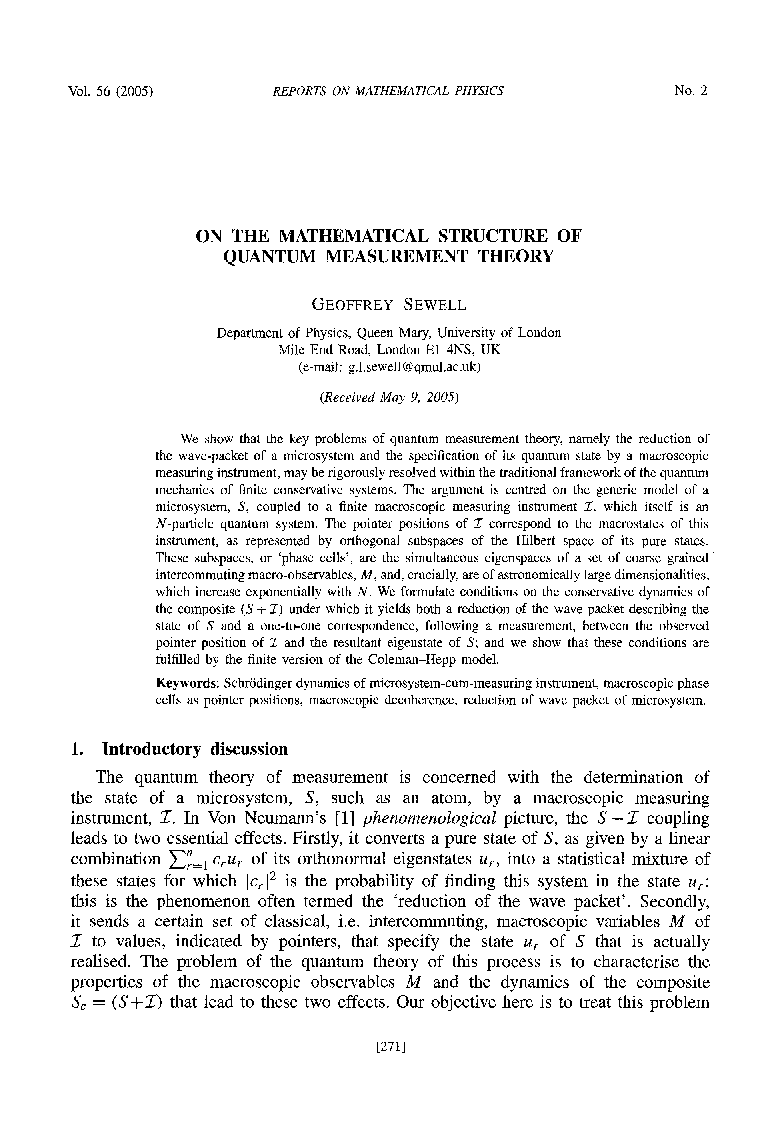| Article ID | Journal | Published Year | Pages | File Type |
|---|---|---|---|---|
| 10735940 | Reports on Mathematical Physics | 2005 | 20 Pages |
Abstract
We show that the key problems of quantum measurement theory, namely the reduction of the wave-packet of a microsystem and the specification of its quantum state by a macroscopic measuring instrument, may be rigorously resolved within the traditional framework of the quantum mechanics of finite conservative systems. The argument is centred on the generic model of a microsystem, S, coupled to a finite macroscopic measuring instrument â, which itself is an N-particle quantum system. The pointer positions of â correspond to the macrostates of this instrument, as represented by orthogonal subspaces of the Hilbert space of its pure states. These subspaces, or 'phase cells', are the simultaneous eigenspaces of a set of coarse grained intercommuting macro-observables, M, and, crucially, are of astronomically large dimensionalities, which increase exponentially with N. We formulate conditions on the conservative dynamics of the composite (S+â) under which it yields both a reduction of the wave packet describing the state of S and a one-to-one correspondence, following a measurement, between the observed pointer position of â and the resultant eigenstate of S; and we show that these conditions are fulfilled by the finite version of the Coleman-Hepp model.
Related Topics
Physical Sciences and Engineering
Mathematics
Mathematical Physics
Authors
Geoffrey Sewell,
